|
Click on any image to see a larger version.
One of the most predictable conversations when a customer approaches me about a new turning job involves their desire to "keep the costs low." I have several responses to this depending on the circumstances and on the customer, mainly because life is too short to waste time and effort working with inferior materials. First, lesser materials often require either extensive repairs to the materials, knots and voids that must be dealt with, or poor performance. Second, lesser materials are, after all, less desirable for one or more important reasons like quality of finish, durability, or rot-resistance. Finally, I want my product to last over time as a point of pride for the customer. I would not want my name and skill associated with a product that fails in a short time.
When one of my regular contractors approached me with a small job he was working on for our town, we both struggled with the expense issue. The job involved an aged (read deteriorated) fence along our famous Main Street, which apparently had also been damaged by some extensive road work that had been done by the town.
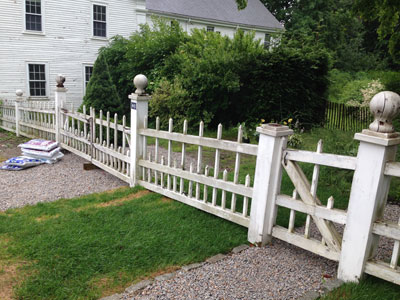
|
I was happily not directly involved in the negotiation, but I understood that the owner and the town manager had sorted out the damage issue by having the town agree to make repairs and some improvements to the fence. This was desirable because the road improvements were important and the fence was in an extremely visible location directly across the street from our historic US Post Office.
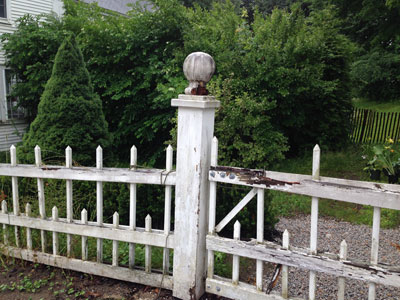
|
The significant rot in the fence would be addressed by the contractor, and we decided initially that I would replace four of the most deteriorated finials, later revised to five when the contractor realized he could not repair another one adequately to make it presentable.
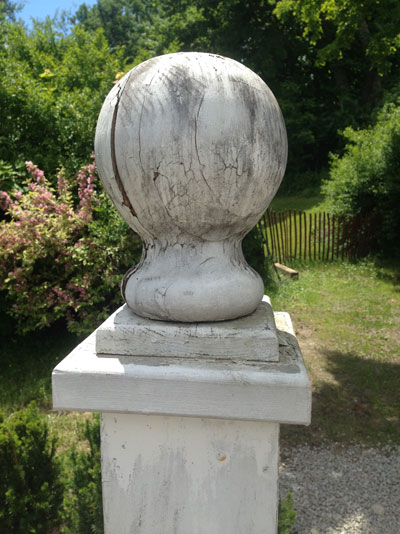
|
These finials had been turned from glued-up local spruce 2x planks, and clearly had suffered from several years of our bright sunshine, wind, rain, and long, cold, snowy winters without adequate protection.
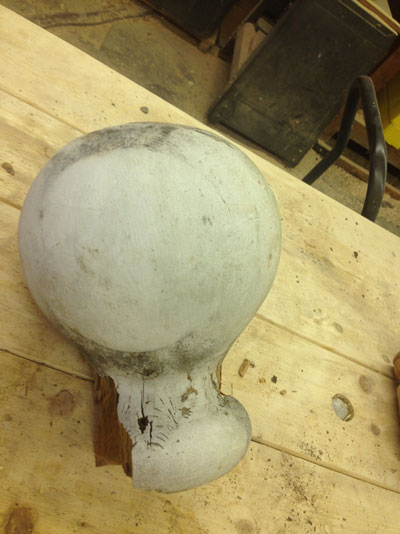
|
I was able to easily retrieve one of the finials that had fallen off its post with enough wood left to make it a measurable model for replacement dimensions, shape, and copied "look" but....
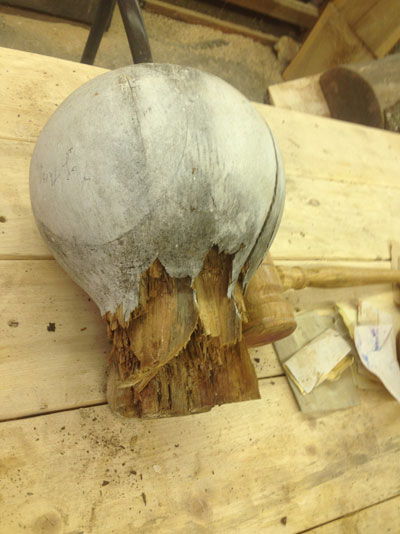
|
... it was clearly not one that could be repaired.
The contractor and I had several discussions beginning with the cost of the most desirable western red cedar from which I would prefer to make the new ones. From my perspective of understanding the job, balanced by my standing as a taxpayer, I looked at it through the lens of this being a "repair" to an old fence not a "replacement." The best material for the job was not realistically in play. Unfortunately, the most prevalent options of pine and spruce (we do specialize in these in Maine) were also not in my list of contenders.
Like many of my peers in woodturning, I am somewhat of a packrat ("so much wood; so little time"), and I remembered that I had some cedar logs of somewhat larger diameter stored in one of my sheds that I had cut more than ten years ago. This being a special occasion, I dragged one out, measured it, and figured out that I could get all four (and fortunately more) from one of the best logs.
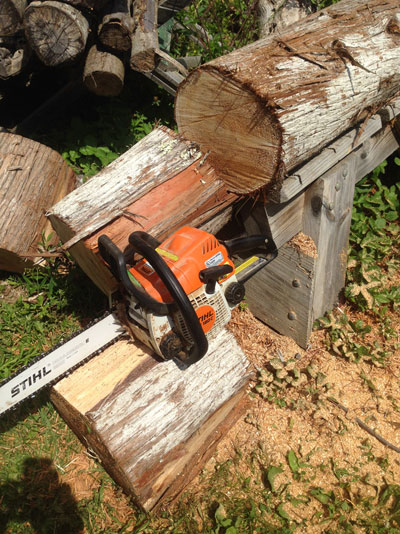
|
Cutting the dry log slightly longer than the finished finial length took no time.
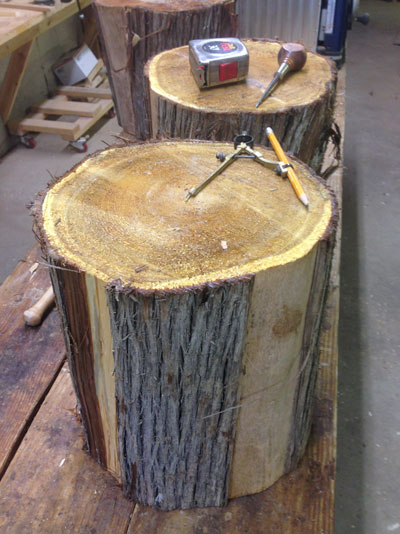
|
Marking the largest diameter on each end helped center the blanks and would allow me to quickly turn the blank round.
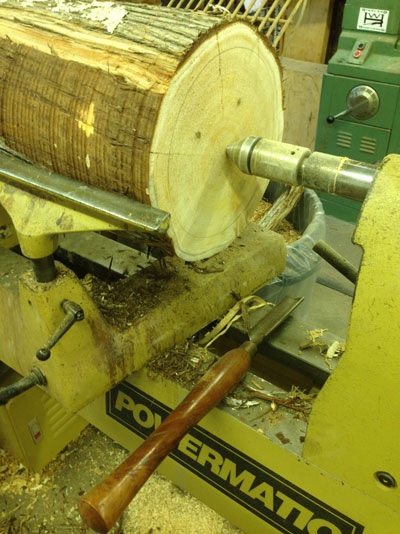
|
Once mounted on the lathe, I applied my large
roughing gouge
to remove the bark, turned it to a smooth roundness, and prepared the blank to mark the other critical transitions between elements.
Personally, I find it helpful to my eye (and to sustain my attention) to have a visual final shape in view when I am turning multiples. In this case, because of the bulbous top and light-weight of the wood, I could turn the piece with the larger diameter toward the tailstock.
While the physics often work better with the larger mass toward the headstock, in this case having it on the right made it much easier to copy the irregular roundness of that ball shape.
Turning the dry cedar this way goes very quickly and generates a great pile of chips. Removing much of the waste, like initial rounding, allows me to then focus my time and attention on the important transition point diameters and shape details.
With much of the base still intact, the top curvature needs shaping. Because of the irregular curves, matching the original is more a matter of hand and eye than of careful measures. Using a well-sharpened large gouge prepares the basic shape for a finishing
skew chisel
, not a cut for the timid but a good challenge for a respectful student of the skew.
On this job, I ended up doing a basic clean-up after the third blank because the pile of cedar chips on both sides of the lathe were too thick and slippery. The long, beautiful, cedar streamers flavored the shop with their distinctive odor.
Once the top elongated ball shape (more like a person's head, I decided) is complete and smooth from the skew, refining the reverse curve into the cove (neck) as a copy of the original is essential. On these finials, I added a 1-1/2" tenon because the contractor was not originally sure how he wanted to fasten them to the posts. He later cut the tenons off and screwed them directly to the top plate. By marking the bottom early, I was better able to gauge the rounded bead (shoulders) of the base and smoothly blend it into the cove.
The adjustment to use raw, dry, solid log materials turned out to be both cost-effective and successful. The dry local cedar will weather and last awhile if the owners keep it properly painted.
Adding a coat of high-quality primer is a help to the contractor while finishing up the job with a professional note.
Main Street in Castine, Maine, is truly lovely during every season and this repaired and repainted fence, directly across from the historic US Post Office, now adds its own upgraded dignity and distinctive contribution to the greater good.
Getting to do jobs like these add a special note of pride and accomplishment to the resume.
Located in Castine, Highlands Woodturning gallery and shop offers woodturning classes and shop time, a gallery of woodturned art, custom woodturning for repairs, renovations, and architectural installations. You can email Temple at
temple@highlandswoodturning.com
. Take a look at Temple's Website at
http://www.highlandswoodturning.com/
.
Return to
The Highland Woodturner
front page
|